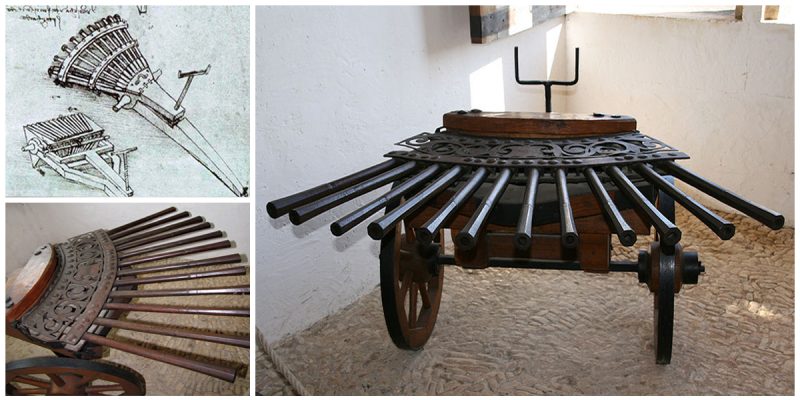A Ribauldequin, also known as a rabauld, ribault, ribaudkin, infernal machine, or organ gun (because its barrels resembled the pipes of a church organ), is one of the early attempts to build rapid-fire artillery.
In use during the 14th and 15th centuries, ribauldequins were made of many small caliber cannons laid side by side on a flat platform.
They were designed to be fired in quick succession with a match connecting the touch hole of all the barrels.
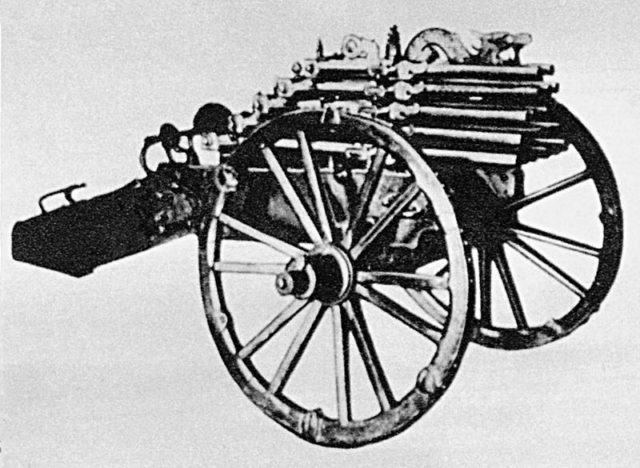
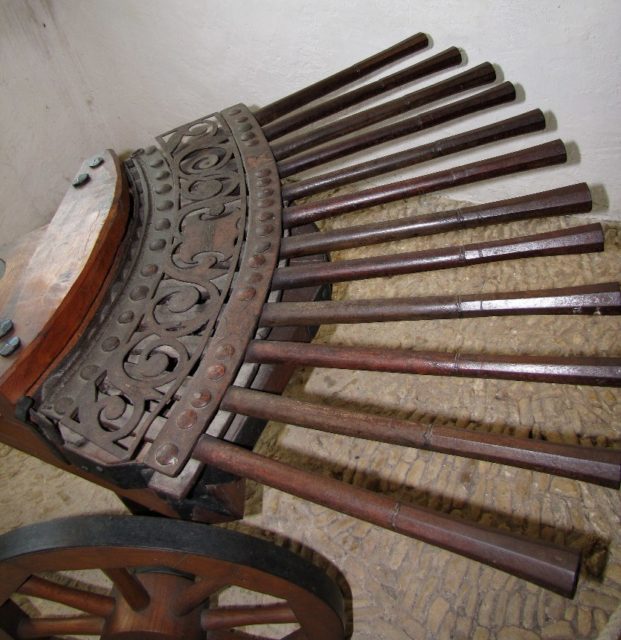
The ribauldequin made its battlefield debut with the army of Edward III of England in 1339 in France during the Hundred Years War.
Other versions of the ribauldequin with more barrels were used in the Italian Wars as well as in the War of the Roses.
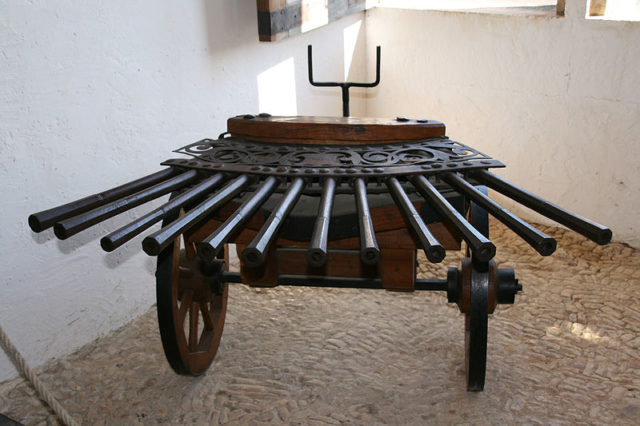
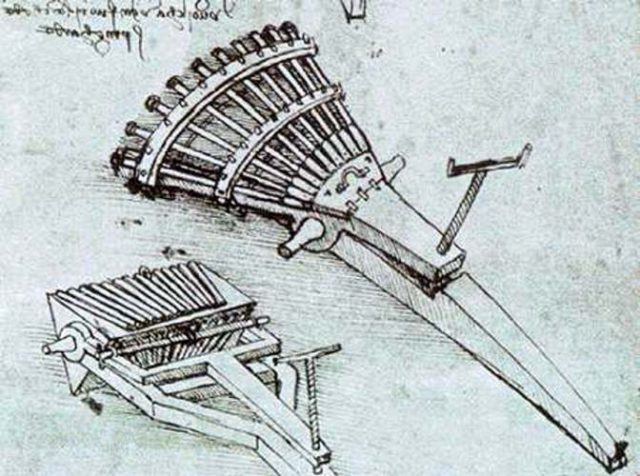
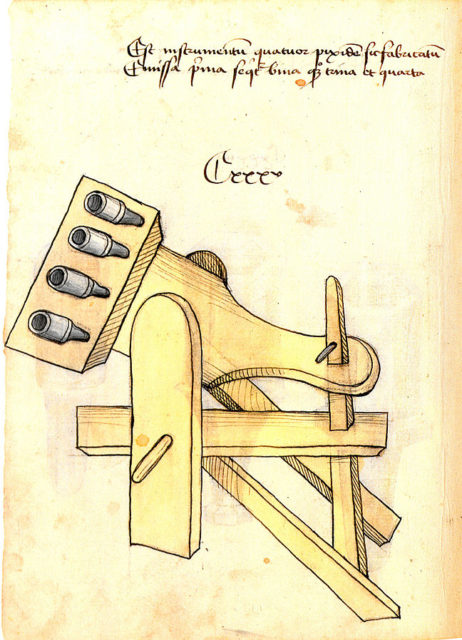
During the Second Battle of St Albans, Burgundian soldiers under Yorkist control utilized the weapon against the Lancastrian Army led by Queen Margaret of Anjou.
In Eastern Europe, a heavier version of the organ gun was used by Stephen the Great of Moldavia as late as 1475, as attested to by Polish chronicler Bielski.
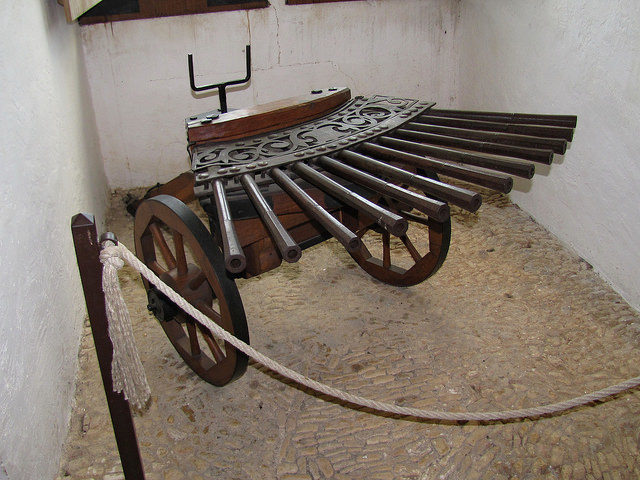
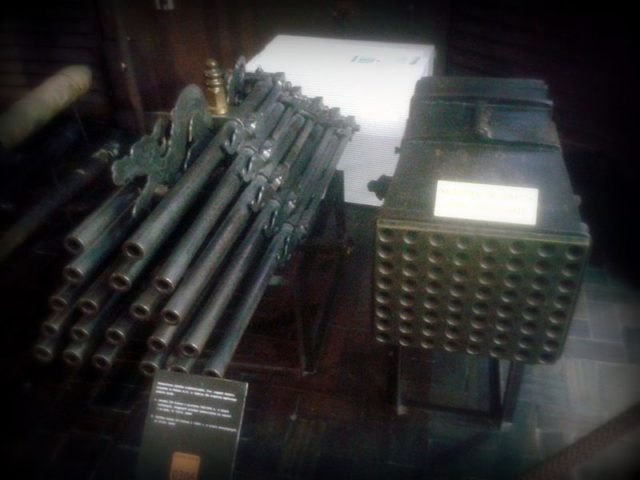
In the 14th century, a rapid-fire weapon would have proved to be quite an advantage during combat. Perhaps the largest were horse-drawn wagons with three sets of guns on each side, which would have made for a total of 144 guns that could be used against both infantry and armored cavalry.
However, ribauldequins suffered from a serious disadvantage as well because the gun still had to be muzzle-loaded which took a very long time to reload. Ultimately, they enjoyed limited use.
